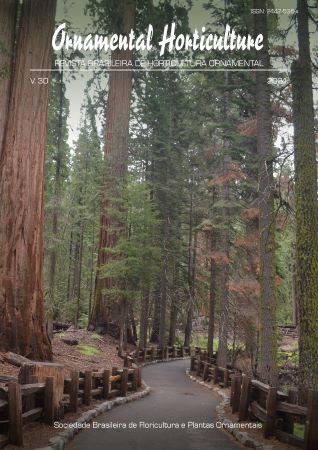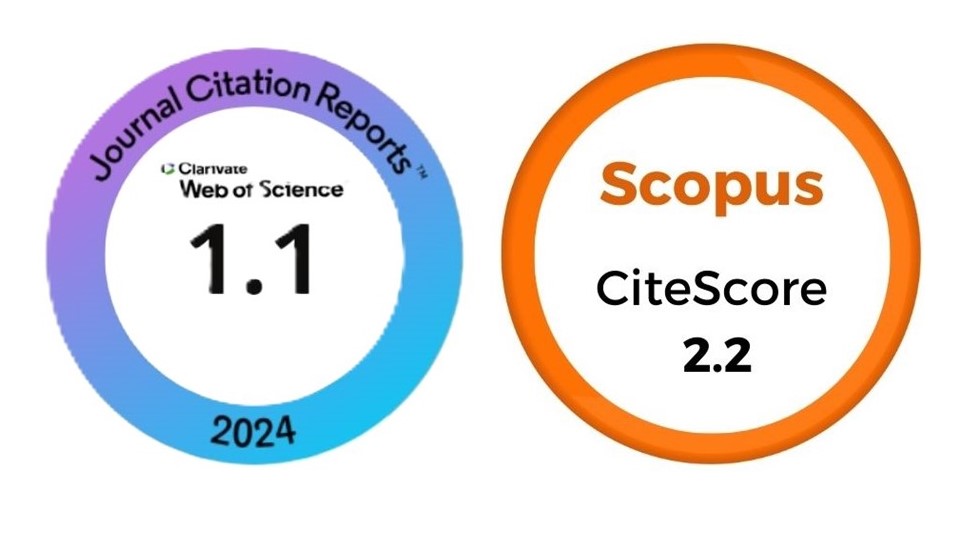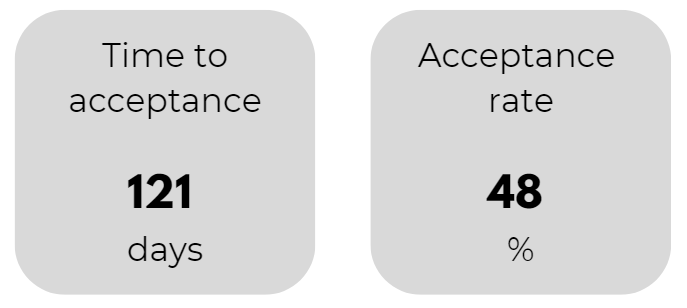Rhyncattleanthe Aurora’s José Françolin– a multiflora material and its genetic selection factors
DOI:
https://doi.org/10.1590/2447-536X.v30.e242763Keywords:
Cattleya hybrid group, floriculture, orchid hybrid, plant breeding, pot plantAbstract
Brazilian flower production demands new materials, especially for orchids. Hybrid production could be a form of gene conservation as the pure species plants are subjected to several harms in the wild. This hybrid’s origin was considered a multiflora plant derived from Guarianthe bowringiana descents. Rhyncattleanthe Aurora’s José Françolin is a novelty hybrid derived from a cross between Rhyncattleanthe Aurora’s Blue Pride #1, a plant with 25% Guarianthe bowringiana that gives the character multiflora with well-formed flowers, and Rhyncolaeliocattleya Turandot “Guaxupé” a known clone with exceptional features. Rhyncattleanthe Aurora’s José Françolin bears spikes of up to five flowers in a medium to big sized, well-armed, with heavy substance ranging from light rose to dark lavender and broad petals, many of them with a broad labellum also, flowers are lightly scented and well adapted to warmer climates. The best clones were selected based on the genetic parameter of petal width (PW, h2 = 0.854) instead of natural diameter (D, h2 = 0.935) due to better flower shape and balance between the other floral segments. Some superior clones are being selected as stud plants and for cloning, for a superior floral count than RC Turandot and good-sized flowers (more than 10 mm in each dimension than RCT Aurora’s Blue Pride #1). Genetic parameters such as the petal width is useful to select superior clones.
Downloads
References
ALLENDORF, F.W.; LEARY, R.F.; SPRUELL, P.; WENBURG, J.K. The problems with hybrids: Setting conservation guidelines. Trends in Ecology and Evolution, v.16, p.613-622, 2001. https://doi.org/10.1016/S0169-5347(01)02290-X
ARIDA, B.L.; SCOPECE, G.; MACHADO, R.M.; MORAES, A.P.; FORNI-MARTINS, E.; PINHEIRO, F. Reproductive barriers and fertility of two neotropical orchid species and their natural hybrid. Evolutionary Ecology, v.35, p.41-64, 2021.
BALILASHAKI, K.; DEHGHANIAN, Z.; GOUGERDCHI, V.; KAVUSI, E.; FEIZI, F.; TANG, X.; VAHEDI, M.; HOSSAIN, M.M. Progress and Prospect of Orchid Breeding: An Overview. In: TIWARI, P.; CHEN, J.-T. (Ed.). Advances in Orchid Biology, Biotechnology and Omics. Singapore: Springer Nature Singapore, 2023. p.261-283.
BROWN, J.C.; JESUS CORRÊA-NETO, J. DE; RIBEIRO, C.F.; OLIVEIRA, M.L. The impact of agricultural colonization and deforestation on orchid bees (Apidae: Euglossini) in the Brazilian Amazon. Biological Conservation, v.293, p.110560, 2024. https://doi.org/10.1016/j.biocon.2024.110560
CARDOSO, J.C. Laeliocattleya “Brazilian Girl Rosa”: v de orquídea para cultivo em vaso. Horticultura Brasileira, v.28, p.378-381, 2010. https://doi.org/10.1590/S0102-05362010000300024
CARDOSO, J.C.; MARTINELLI, A.P.; TEIXEIRA DA SILVA, J.A. A novel approach for the selection of Cattleya hybrids for precocious and season-independent flowering. Euphytica, v.210, p.143-150, 2016. https://doi.org/10.1007/s10681-016-1714-2
FELIX, L.; GUERRA, M. Variation in chromosome number and the basic number of subfamily Epidendroideae (Orchidaceae). Botanical Journal of the Linnean Society, v.163, p.234-278, 2010. https://doi.org/10.1111/j.1095-8339.2010.01059.x
FRANCISQUETI, A.M.; MARIN, R.R.; HENGLING, M.M.; HOSOMI, S.T.; PRITCHARD, H.W.; CUSTÓDIO, C.C.; MACHADO-NETO, N.B. Orchid seeds are not always short-lived in a conventional seed bank! Annals of Botany, v.133, p.mcae021, 2024. https://doi.org/10.1093/aob/mcae021
GOVAERTS, R. World Checklist of Vascular Plants (WCVP) –Version 12.Board of Trustees of the Royal Botanic Gardens, Kew, 2023. Available at: <https://kew.iro.bl.uk/concern/datasets/32f77ea6-0f7b-4b2d-b7b3-173ed4ca2d6a?locale=en>. Accessed on: 8 jun 2024.
HINSLEY, A.; DE BOER, H.J.; FAY, M.F.; GALE, S.W.; GARDINER, L.M.; GUNASEKARA, R.S.; KUMAR, P.; MASTERS, S.; METUSALA, D.; ROBERTS, D.L. A review of the trade in orchids and its implications for conservation. Botanical Journal of the Linnean Society, v.186, p.435-455, 2018. https://doi.org/10.1093/botlinnean/box083
HINSLEY, A.; LEE, T.E.; HARRISON, J.R.; ROBERTS, D.L. Estimating the extent and structure of trade in horticultural orchids via social media. Conservation Biology, v.30, p.1038-1047, 2016. https://doi.org/https://doi.org/10.1111/cobi.12721
JUNQUEIRA, A.H.; PEETZ, M. Brazilian consumption of flowers and ornamental plants: habits, practices and trends. Ornamental Horticulture, v.23, p.178-184, 2017. https://doi.org/10.14295/oh.v23i2.1070
MACHADO NETO, N.B. Selection parameters of a new “coerulea” multiflora hybrid: Cattlianthe aurora’s blue pride. Crop Breeding and Applied Biotechnology, v.19, p.487-490, 2019. https://doi.org/10.1590/1984-70332019v19n4c70
MACHADO-NETO, N.B.; FILETI, J.F.; CUSTÓDIO, C.C. Cattleya Aurora’s Little Ian: a novelty mini semper-flowering material and a genetic parameter for superior clone selection. Horticultura Brasileira, v.40, p.115-118, 2022. https://doi.org/10.1590/s0102-0536-20220115
MINAMIGUCHI, J.Y.; CUSTODIO, C.C.; MACHADO-NETO, N.B. A new Dendrobium cultivar: Den.‘Aurora’s Orange Hana’. Ornamental Horticulture, v.29, p.264-268, 2023. https://doi.org/10.1590/2447-536X. v29i2.2591
MURASHIGE, T.; SKOOG, F. A revised medium for rapid growth and bio assays with tobacco tissue cultures. Physiologia plantarum, p.473-497, 1962.
REITER, N.; DIMON, R.; FREESTONE, M. Saving orchids from extinction: The RBGV orchid conservation program’ex situ’collection. Australasian Plant Conservation: Journal of the Australian Network for Plant Conservation, v.29, p.11-13, 2020.
SILVA, G.M.; VARELLA, T.L.; KARSBURG, I.V.; SANTANA, T.N.; CARVALHO, I.F.; SILVA AÑEZ, R.B. DA; ROSSI, A.A.B.; SILVA, M.L. DA. Cytogenetic characterization of species and hybrids of orchids of Cattleya genus. Cytologia, v.82, p.137-140, 2017. https://doi.org/10.1508/cytologia.82.137.
SOLTIS, P.S.; GITZENDANNER, M.A. Molecular systematics and the conservation of rare species. Conservation Biology, v.13, p.471-483, 1999.
STULZER, G.C.G.; HOSHINO, R.T.; SUZUKI, A.B.P.; ALVES, G.A.C.; FARIA, R.T. DE. Primary hybrid of Cattleya forbesii x Cattleya loddigesii, a new brazilian orchid. Crop Breeding and Applied Biotechnology, v.19, p.364-367, 2019. https://doi.org/10.1590/1984- 70332019v19n3c50
SUAREZ-GUERRA, L.; TELLEZ-BELTRAN, G. Encyvola’Cachita’. Orchid hybrid of wide adaptability to the tropical conditions. Cultivos Tropicales, v.41, p.e08, 2020.
SUBRAHMANYESWARI, T.; VERMA, S.K.; GANTAIT, S. One-step in vitro protocol for clonal propagation of Dendrobium Yuki White, a high value ornamental orchid hybrid. South African Journal of Botany, v.146, p.883-888, 2022.
WITHNER, C.L. The Cattleyas and their relatives: a book in six parts. Vol. 1. The Cattleyas. Portland: Timber Press, 1988. 147p.
WU, J.-Y.; HSIEH, T.-F.; TSAO, C.-Y.; CHUANG, K.-C. Breeding of an Indigo Phalaenopsis by Intergeneric Hybridization: Rhynchonopsis Tariflor Blue Kid ‘1030-4’. HortScience, v.57, p.489-490, 2022. https://doi.org/10.21273/HORTSCI15944-21
YUAN, S.-C.; LEKAWATANA, S.; AMORE, T.D.; CHEN, F.-C.; CHIN, S.-W.; VEGA, D.M.; WANG, Y.-T. The global orchid market. In: The orchid genome. [s.l.]. Cham: Springer, 2021. p.1-28.
Downloads
Published
Issue
Section
License
Copyright (c) 2024 Ornamental Horticulture

This work is licensed under a Creative Commons Attribution 4.0 International License.








